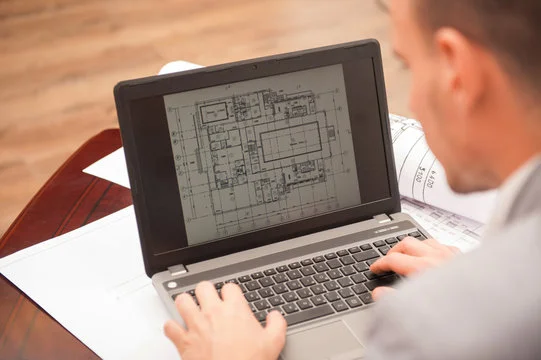History of Computer Aided Design: How CAD Changed the World
The history of Computer Aided Design is a fascinating journey through decades of innovation, transforming the way we design, draft, and manufacture. The chronological history of CAD runs the entire spectrum from the hand-drawn blueprint to digital 3D modeling. It is relevant to almost every industry, including engineering, architecture, and product design, in a very practical way. This computer concept was once very simple; now, it is really the anchor point for any modern design and development workflows.
LOOK AT THE HISTORY OF COMPUTER AIDED DESIGN, ITS INVENTION, EVOLUTION, AND INFLUENCE ON PRESENT-DAY DRAFTING, ARCHITECTURAL, AND ENGINEERING INDUSTRIES!
When Was CAD Invented?
Early in the year 1960, the first period in the development of CAD, the principal thrust of sketch work was against the mechanization of drafting. It was the first CAD that Dr. Patrick Hanratty used. In 1957, he invented something that was called DAC (Design Automated by Computer). But in real terms, CAD was truly pioneered in 1963 with Ivan Sutherland’s creation of SketchPad.
Sketchpad was an interactive graphics program that allowed users to make technical drawings by using a light pen. It was the first software program to incorporate entity attributes, constraints, and object-oriented programming, which remain as necessary CAD software assembly blocks. This early innovation has played a big role in setting the stage for future onsite developments and applications.
The First CAD Software
The first CAD software was commercialized in the late 1970s. That’s when industries such as General Motors and IBM began to experiment with digital drafting. By the turn of the decade in the ’80s, software such as AutoCAD made CAD more accessible for small companies and individual designers. This democratization then unfolded, branching out digital design into architectural firms, mechanical engineers, and even in some cases, artists.
Software development quickly ramped up with AutoCAD as the engine. The line from 2D drafting to 3D modeling, simulation, and analysis, which has reduced manual drafting to just a few human hours while providing greater precision in designs than ever before, took place.
How CAD Changed the World?
One cannot understand the history of Computer Aided Design without factoring in all the technological advancements that initiated the design of digital models. CAD simplified the theoretical conception of complex designs and allowed engineers to experiment with ideas virtually. It revolutionized collaboration globally by allowing teams to work anywhere. This change from paper to pixels has altered the design approach somewhat drastically.
Within the manufacturing context, CAD boosted accuracy and speed, embracing CNC machine operations and rapid prototyping. Architecture and construction were enhanced due to 3D renderings and clearer communication. Architectural CAD drafting still services the laying out of intricate plans and elevations. With the assistance of Internet-based distribution, CAD drafting services have managed to breach geographic barriers.
Advantages of CAD
There are countless advantages of CAD that contribute to its continued use across multiple sectors.
- Accuracy: CAD minimizes human error, allowing designers to zoom in on fine details and perfectly align design elements.
- Speed: It significantly reduces the time needed to create, edit, and duplicate drawings compared to manual drafting.
- Data Storage & Retrieval: CAD files are now saved as digital files that provide physical space saving and easy retrieval of past designs at a quick retrieval speed.
- Collaboration: Different teams from other departments or geographical locations can work together simultaneously on the same project. As a result, communication is enhanced, and the time spent is reduced.
CAD Drafting Services and Their Role
As CAD technology advanced, CAD drafting services emerged to support businesses lacking in-house design teams or handling large projects. These professionals transform ideas like floor plans or mechanical components into accurate digital models.
A skilled drafting company uses industry-standard software to deliver precise 2D drawings or full 3D models. Their services are vital for firms needing scalable, high-quality design support without delays.
The Evolution Continues..
The saga of Computer Aided Design has traversed 2D and 3D in the newer realms of the integration of AI, VR, and BIM. Designers can now replicate real-world situations and take virtual strolls through their models. Cloud-based CAD provides real-time collaboration and interoperability with other software systems, such as ERP. As technology advances, CAD will evolve with smarter features and deeper and smarter integration.
Conclusion!
The virtual history of Computer Aided Design is proof of human ingenuity and advancement. From its earliest origin marked as research labs, it has grown as an indispensable instrument throughout industries. CAD has definitely transformed the way people design, build, and devise. Architectural drafting services, CAD drafting services, or even a good drafting company work hand in hand to bring forth the features. Modern businesses can benefit from what their predecessors took advantage of with CAD for many decades. One thing is for sure as I look toward the future. CAD will continue influencing the way the world operates in forms that only begin to be imagined.




